‘A Power Plant Is a Special World, Like a State within a State’
Yulia Shulenina dreamed of working at archaeological digs in Egypt but ended up researching the industrial architecture of the avant-garde. In this interview with the HSE Young Scientists project, she spoke about her passion for academic singing, Soviet-era experimental housing at Voikovskaya, and the mystery of the GRES-3 power plant in the Moscow region.
Choosing a Career in Science
I didn’t start out with such a plan, but that’s how things developed. After getting my bachelor’s in political science at MSU, I decided to change my major to art history and switched departments. I have always been attracted to history, culture, and art, and I still feel good about having linked my studies and subsequent work to these fields. For my master’s, I enrolled in the HSE School of Design as an art critic.
I like the process of research itself, so it is important for me to have my own topic and to devote a lot of time to it. I like to develop along these lines: sometimes I give lectures on my topic and I also plan to teach a course at HSE University.
My Area of Research
In graduate school, I had to choose a research topic. I considered both Renaissance painting and music, but in the end I chose industrial architecture. At that time, I was working in the press service of Mosenergo and had contact with the Mosenergo Development History Museum. I wanted to combine my interest in art with the energy field, and this led to the architecture of power plants as a theme.
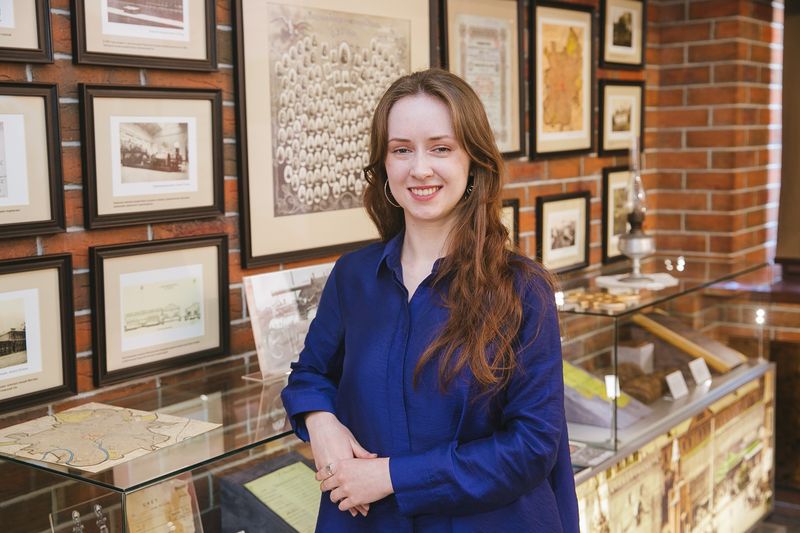
Power plants were first built around the world in the 1880s. I am primarily interested in pre-revolutionary industrial architecture and the avant-garde era, right up to the pre-war period. It was then that the basic principles of industrial facility design were formulated. There were many interesting experimental solutions and leading architects were involved in the construction. Today, the design of industrial facilities is more standardised. My theme allows me to cover such related areas as avant-garde art, urbanism, urban planning, and the modern process of revitalising industrial facilities. There are many valuable architectural monuments from the pre-Revolutionary period and avant-garde era.
The Most Famous Moscow Power Plant
This is probably the HPP-2, one of the first power plants in Moscow. It was built in 1907, before the Revolution. After it was rebuilt, it became a House of Culture, a museum of contemporary art.
Another well-known station is the HPP-1 that was called the Raushskaya power plant before the Revolution. It is located near the Kremlin. You can see it across from the Soaring Bridge in Zaryadye Park. This is the oldest operating power plant in Russia, and possibly even Europe. The architect Ivan Zholtovsky designed a very interesting boiler building with glass bay windows for it in the 1920s. You can’t see it from the street, unfortunately; only the plant’s staff can. Fortunately, my work provides such an opportunity.
And the building of the first central power plant built in Moscow—the Georgievskaya—is now occupied by the New Manege. The power plant itself worked for only 11 years; in the Soviet years it housed a car garage and a taxi depot; and in 1997, after a large-scale reconstruction, an exhibition space was opened.
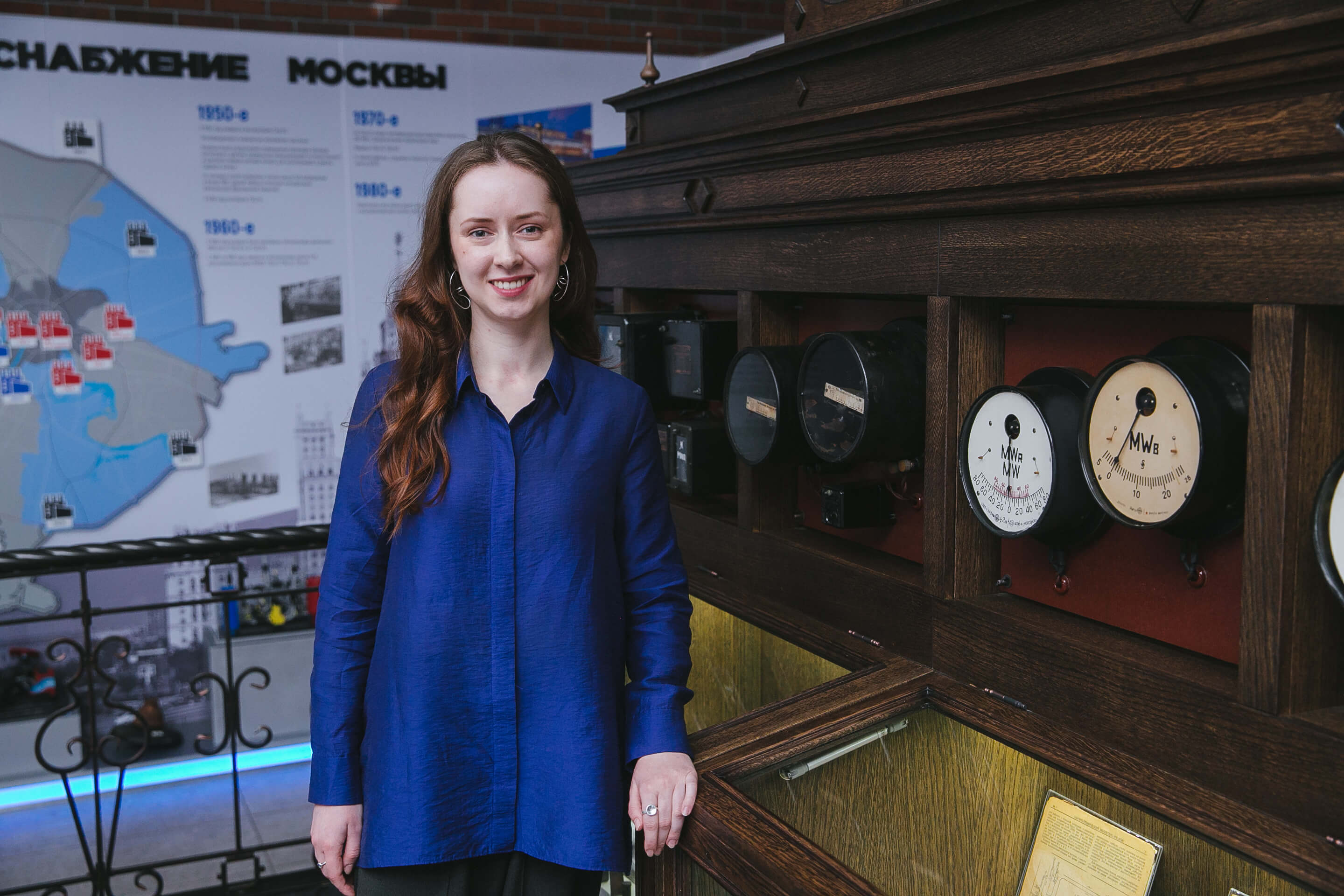
What my Research into Power Plants Uncovered
I often work with buildings that are shrouded in mystery: the architect who designed it, the years it was built and the story of its construction are all unknown. You often feel like a detective who is trying to piece together all this information. The greatest pleasure is when everything comes together in a single picture. For example, for a long time, the GRES-3 station near Moscow (historically named the ‘Electric transmission station’, was built in 1914) was a mystery to me. The station was notable for its functional architecture compared to other buildings of that period, but there was practically no data about the architect and the design process.
About a year ago, I managed to find architectural drawings of this plant in the technical archive of Mosenergo. They bear the signature of a very famous German architect, Hermann Muthesius, who founded the Werkbund German Art and Industry Association. Apparently, it was he who designed this power plant. The Werkbund was a very influential organisation that laid the foundation for the formation of the well-known Bauhaus.
It is interesting that neither Russia nor Germany knew about this project of Muthesius; the station is not listed as part of his legacy. However, the drawings bear his signature and seal. This story became the subject of my research article about the design of the station and the interaction between Russian and German architects.
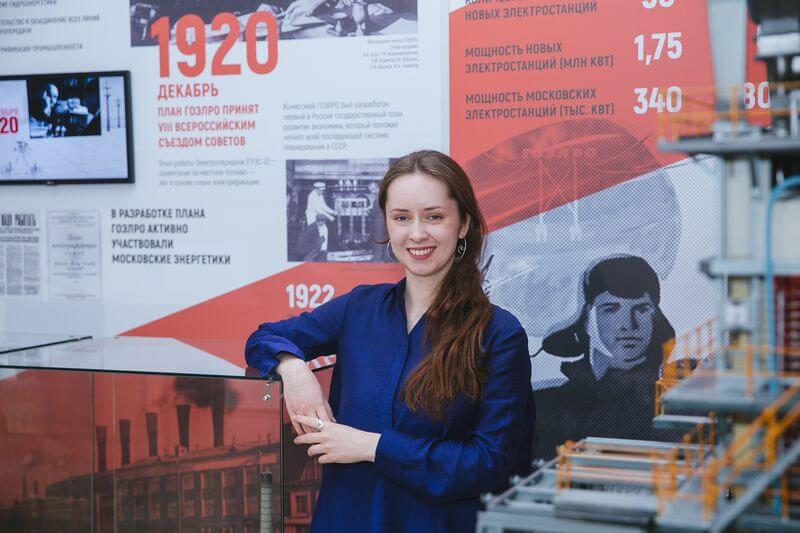
An Additional Point of Pride
In 2021, the Museum of Moscow hosted the exhibition ‘Electrification—100 Years of the GOELRO Plan’. It was curated by my scientific adviser Alexandra Selivanova. The exhibition was devoted to the process of electrification and how it was reflected in the art and culture of the avant-garde in various genres—cinema, architecture, music, theatre, literature, the fine arts and design. At that time, there was a boom in industry: manufacturing plants, factories and power plants were built at an accelerated pace throughout the country. Leading architects and other artists were involved. I was lucky to help prepare the exhibition. A whole section was devoted to the architecture of power plants. One year later, the catalog ‘Electrification: Light and Electric Current in the Art and Culture of the 1920s–1930s’ was published, which is a full-fledged scientific study. It includes my article about the architecture of the first Soviet power plants.
My Dreams
I dream about making my work relevant and useful. I would like people to devote more attention to architectural monuments and industrial heritage so that these buildings are not destroyed, but preserved and revitalised. And to develop industrial tourism in the country.
What Drives me as a Researcher? Interest in the world around me and the pleasure that comes from knowing that there is a scientific topic that I can study, explore in more detail, and get results from.
You can study any topic for yourself, but if you are a researcher, you do it more systematically; there are obligations to organisations—for example, to HSE: deadlines for articles, speeches at conferences. This often prompts you to make a deeper study of the topic. I still have to teach at the Higher School of Economics; we are currently developing a course on the revitalisation of industrial facilities.
My Work
I work in the press service of Mosenergo, but I am mainly involved in the Mosenergo Development History Museum. We have many excursions devoted to the history of electrification in Moscow. I can also speak about architecture, how this topic is reflected in art and culture, the GOELRO era or the avant-garde era.
The museum also has a large archive that we work with; it provides a lot of useful information for research.
A power plant is a special world, like a state within a state. Each station lives its own rich life; each has its own characteristics.
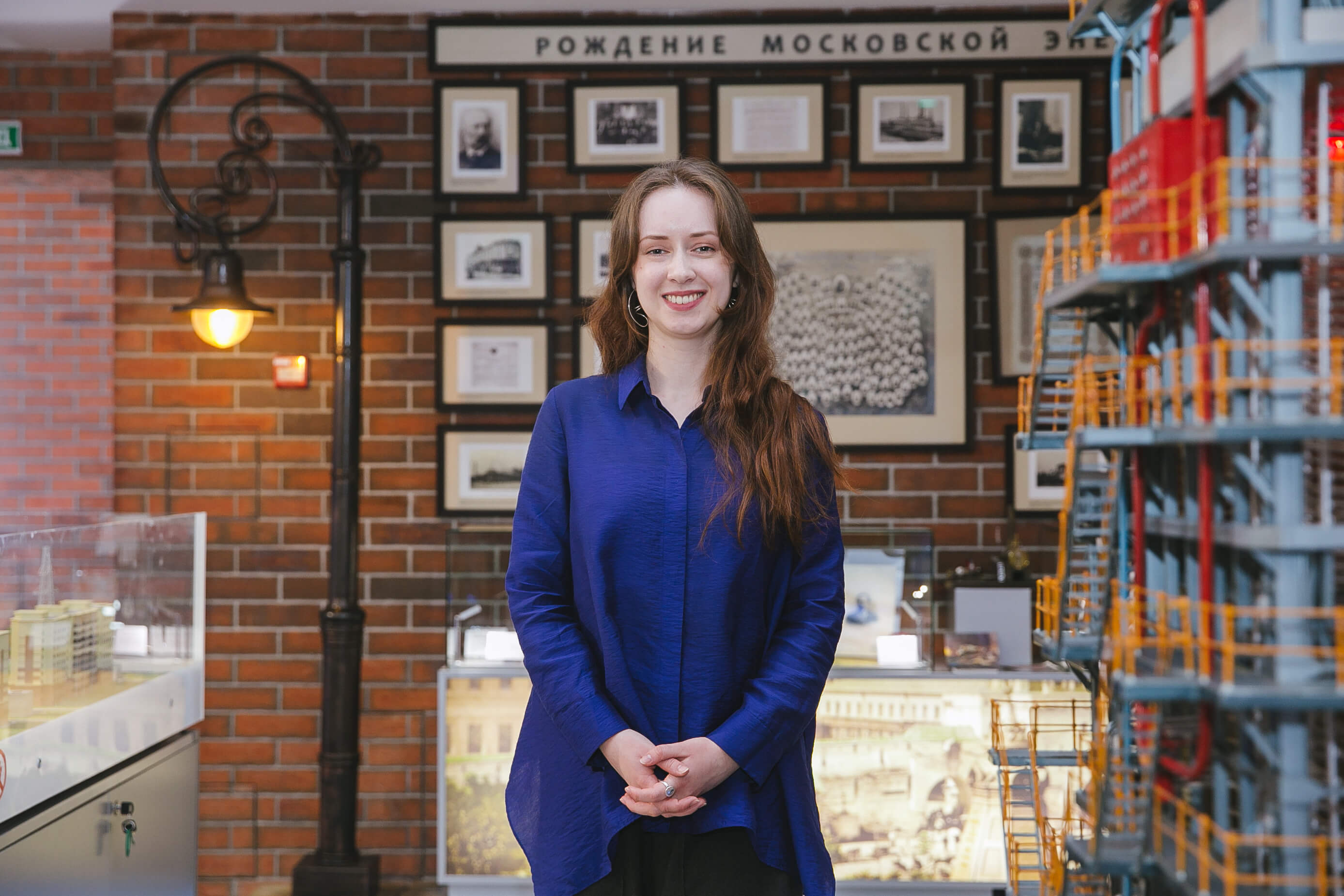
If I Hadn’t Become a Scientist
As a child, for a long time I wanted to be an archaeologist and study ancient Egypt. I watched scientific programmes on TV and dreamed that I would study the pyramids or Egyptian hieroglyphs and work on archaeological digs. Another option was to go into medicine, but my interest in history won out.
The Scientist I would Most Like to Meet
Selim Omarovich Khan-Magomedov. He was a researcher who collected and processed an impressive amount of information about the architectural avant-garde.
I would also be interested in talking to different architects who have designed power plants. Usually, you study the activities of architects based on their drawings, buildings, and historical data. I would like to know what they themselves put into their work.
Coping with Burnout
I try to allocate my time correctly, not to postpone things until the last moment. I want to break the habit of working at night. I usually do my best writing at night for articles and other materials, but life doesn’t always allow for such a rhythm. My hobbies also help: dancing, yoga, and singing. Of course, psychotherapy is important. It also helps a lot with burnout.
My Hobbies
A year and a half ago, I got into academic vocals: I sing romances, arias from operas. I didn’t attend music school; my main hobby since childhood was choreography. Only as an adult did I go to a voice teacher. It turned out that I had a coloratura soprano, the highest female singing voice. So now I listen to opera and classical music, go to the Bolshoi Theatre, and watch good recordings of such performances. I also like baroque music and even spiritual things like Stabat Mater or Lacrimosa. My favourite opera is Mozart’s The Magic Flute. I would like to perform the ‘Queen of the Night’ aria one day.
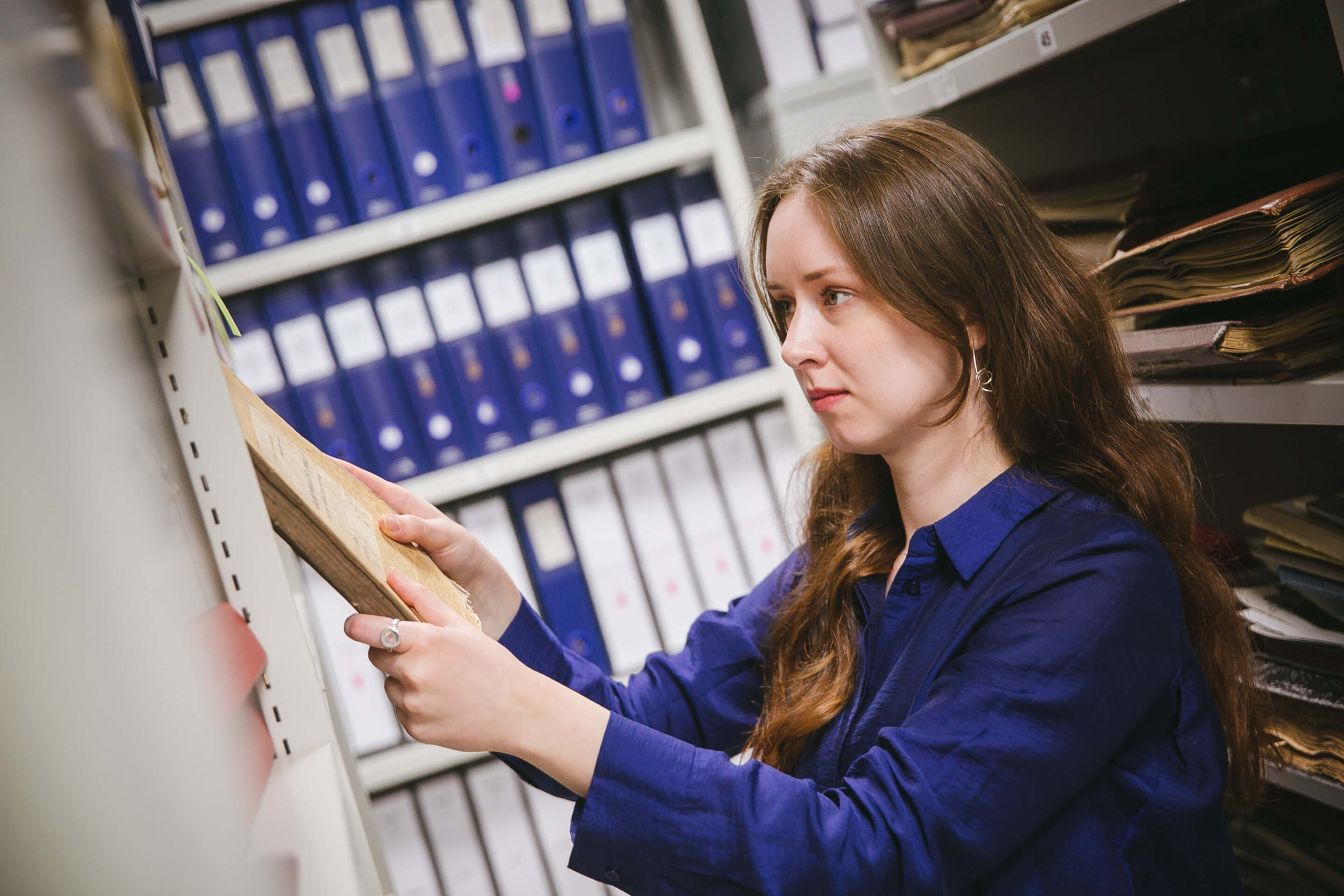
What I’ve Been Reading and Watching Lately
I have always read a lot of fiction; I like it. Probably, the drawback of doing research is that it leaves you no time to read for pleasure; you are always burdened by the thought that you need to devote more time to scientific literature. Now, for spirituality, I’m reading Roland Barthes’ Fragments of a Lover’s Speech. Sometimes I read modern literature as recommended by the critic Galina Yuzefovich. Most recently, I read Fox Brody by Anna Starobinets. I really liked this novel. Sometimes I re-read my favorite works—Ulysses by James Joyce and Moby-Dick; or The Whale by Herman Melville. I also really like Alice in Wonderland. There are many absurd things in the world; perhaps not everything should be taken seriously. I haven’t watched any movies in a long time, unfortunately, but usually prefer something by Krzysztof Kieślowski or Michelangelo Antonioni.
Advice for Budding Scientists
Choose a topic that you enjoy and in which you are genuinely interested. It’s clear that the scientific path is fraught with many difficulties, but if you are sincerely interested in your topic and understand your motivation, then this always makes the research process more meaningful.
Don’t be shy and don’t be afraid to make use of all your opportunities. I always try to reach out to all people and organisations that are somehow related to my topic. You never know what thoughts this or that communication will lead you to.
How I See My Future
To begin with, I would like to finish postgraduate school and defend my dissertation. Maybe after that, I’ll publish something based on my research materials. In general, I would like to link my life to art and culture. In addition to working in the museum, I try to give lectures on my topic and participate in various laboratories, projects and exhibitions.
I like working with the industrial heritage, which is now being preserved and revitalised. However, the future of some buildings remains uncertain. For example, the decommissioned CHPP-7 station at the Trekhgorny factory. Of the power plants in Moscow, this is the most outstanding example of constructivism, which today is partially protected as a monument of architecture. There were once plans to open a Centre for the Russian avant-garde there, but the fate of that power station remains undecided; it still stands shrouded under industrial nets.
My Favourite Place in Moscow
We often don’t pay attention to the architecture that surrounds us every day. If you carefully look around, you will always find something interesting. This is what makes you take an interest in the place where you live. I have always lived near Vodnyy Stadion and Voykovskaya Station. There are many interesting Soviet modernist buildings there: the Dynamo Sports Palace and the Lebed experimental residential complex that echoes the ideas of Le Corbusier.
A little further away is Rechnoy Vokzal that was recently opened after reconstruction. It is now a very popular place in Moscow, with highly developed infrastructure. When I was a child, there was an ice-skating rink in the nearby park every winter and we skated along the paths, with the half-abandoned and shuttered train station looming in the distance.